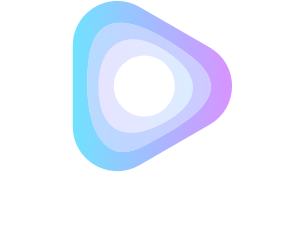Professional-level livestreaming is no longer expensive, tricky, or technical. If you’re still feeling hesitant about going live, or stuck on a free platform (like YouTube or Twitch) that capitalizes on your audience’s data, let’s bust some common myths that may be holding you back. In just a few minutes, you’ll gain a better understanding of the streaming industry, build confidence in your ability to choose the right streaming solution to fit your needs, and be ready to stream through your website or app in no time. Let’s dive in.

Myth 1: Low-latency livestreaming is complex and expensive
Originally, livestreaming piggy-backed off the existing infrastructure of the internet – an infrastructure built before live video was even a plan. Most video content got distributed through CDNs (which is still the case today) for its efficient distribution of data to users around the world. But the protocols facilitating the information transfer weren’t designed to handle that level of data quickly. This made the original solutions for livestreaming clunky and expensive. Today, we have new protocols (like ULL-CMAF pioneered by Livery and Akamai) that reduce the amount of information that needs to move all at once.
Imagine producing and shipping a single 1000 kg weight from one country to another. Not only would it take a long time to manufacture, package, and ship, but it would also require a lot of money and dedicated resources to move. On the receiving end, you would have nothing to look at until it arrived (likely after several months).
Then picture what it would be like to spread that 1000 kg up into 1 kg smaller weights that got shipped as they were created. They wouldn’t require any dedicated resources and could move much more freely and inexpensively. On the receiving end, you’d have a steady flow of weights coming in over time (starting in just a matter of days).
Swap the weights for video files, and you now understand the improvement in the protocols. ULL-CMAF has reduced both the cost and difficulty of streaming and sped up the process in a way that makes low latency standard instead of a premium.

Myth 2: Everyone needs ultra-low-latency livestreaming
If you choose Livery, ultra-low-latency livestreaming (ULL) comes standard. But if you’re looking at other solutions, it can add significant cost. Taking it a step further, some companies will try to sell you on sub-second (< 1 second) latency (often at 10X+ the cost). While we are as excited about recent developments in ultra-low latency as anyone, it’s only part of what most live and interactive video use cases require. So why pay so much more for something that doesn’t add all that much value?
So some topics to keep in mind before you buy:
- Will you offer any kind of interactivity with your video? Polls, chat, trivia, etc. are examples of video interactivity. If you want to engage with your audience in real time, you need a solution that can accommodate it. As a gauge/rule of thumb, 3-to-6 seconds of latency is better than a television broadcast with none of the risks, costs, or complications of sub-second latency.
- You may actually need sync more than you need low latency. Having a 3-to-6-second delay matters even less if everyone is on the same page. In most use cases, the real problem is more often an inconsistent stream – i.e., when some viewers are a few seconds ahead of others. This leaves room for miscommunication at best, or downright cheating the system at worst (depending on the scenario). Can the solution you’re evaluating guarantee sync?
- What happens if you go viral? Is the solution you’re looking at prepared to scale? Most sub-second latency solutions run into playback, buffering, and freezing issues when the stream gets too big.
- How important is audio/video quality? Most sub-second latency solutions available today are based on WebRTC, which is open-source software designed for real-time one-on-one streaming (like video chat). As you add users (like when you get a big Zoom meeting), the audiovisual quality rapidly deteriorates. If you plan to stream to 10+ (or 1,000,000+) viewers, will your solution crumble under the pressure?

Myth 3: You need a computer science Ph.D. to set up a streaming solution
All jokes aside, setting up a high-quality livestream feed on your own app or website used to be a headache to figure out. While there were many options for stream providers, if you didn’t have answers to complex questions ready to go, you were out of luck.
Questions like:
- What DASH or HLS encoder do you use?
- What bitrates will you be ingesting?
- How much cloud-to-CDN traffic do you need?
- What player are you licensing?
- Where are your viewers streaming from?
- Etc.
Questions like these leave most people feeling behind or excluded from the conversation. It no longer needs to be this complicated (even though some companies still use this kind of questioning to confuse you into letting them take care of the details for you). It’s the 2020s – you shouldn’t need to spend weeks researching something before you can even consider evaluating providers. Getting the pieces together to stream has never been simpler.

Myth 4: The only way to get a good rate is with a long-term commitment
Whether you stream for a month or a year, the service remains the same. There’s no less bandwidth used by your 100th stream than your first (all things equal), so why do some companies only offer a good rate with a long-term commitment?
At Livery, we believe in transparent pricing based on your actual usage and don’t even offer long-term contracts. Stream when you want, how you want, on a month-to-month contract basis.

Myth 5: Livery solves every problem (spoiler alert: we’re not perfect either)
While Livery was born out of frustration with the industry status quo, that doesn’t mean we solve every problem the industry faces, or that we’re the perfect solution for every use case. Continuing with the theme of full transparency, here are some situations when Livery may not be for you:
- You need two-way video communication. Livery is designed for broadcast scenarios (one-to-many), not one-on-one conversation. While we offer a comprehensive set of interactive features that allow your users to respond (for example, chat, moderated Q&A, polls, and more), it’s all structured communication (i.e., not a free-flowing conversation). If you want your viewers to video chat with you, you’re better served with a two-way solution based on WebRTC.
- You run 24/7 streams with small audiences. To deliver superior picture and sound quality reliably, Livery distributes video via CDN. This requires a cloud (or on-premise) encoder, which costs money every hour you stream. So if you stream 24/7 with 10 or fewer simultaneous users, a solution where you can encode on the video capture device itself may save you money.
- You prioritize TV users. Livery offers a rich, interactive experience to its users. Because of this, we focus on supporting web, iOS, and Android use cases because these devices already offer ways for users to tap, swipe, click, etc. This is a much better experience for interactivity use cases than a TV remote (if you’ve ever used a TV remote to search or enter a password, you already know what we mean). While we have some support for TVs and set-top boxes, other video solutions offer a wider range of supported devices. So if you’re looking for a solution that brings your content to Roku, cable boxes, Samsung Tizen etc., we recommend you choose another provider.
- You want your video to sync with social platforms. If your main use case is streaming to Facebook, TikTok, Instagram, Twitch, or another social video platform, Livery may not be the logical choice. This is not because of technical/compatibility problems – it’s easy to re-stream across multiple platforms nowadays. The limited features and high latency of social video mean that it’ll be hard to offer a consistent experience between viewers across platforms.
- You need a fully custom interactive experience. Livery offers some customization features to make your stream fit your aesthetic, but (as of today) doesn’t offer you a way to create a fully custom customer-facing interface yourself. If you know you need that level of detail flexibility, we recommend you pick an app developer or agency to build a custom front end.
Note: you could still choose Livery to power the back end (i.e. video layer), because it is optimized for any interactive video combination. - You need advanced real-time video editing capabilities. We don’t offer video filters or advanced video modifications. Our goal is to take whatever source feed Livery gets and bring it to all end users as close to the original (with the highest video integrity) as the compression allows.
Hopefully we cleared up a few things about the streaming industry for you and busted a couple of myths about the costs of professional-quality online video.
At Livery, we believe it shouldn’t be so difficult to evaluate interactive livestreaming platforms. That’s why we created our cost comparison tool: to empower you with the knowledge you need to make the right choice for you, even if it leads you to a competitor.





